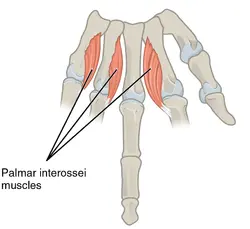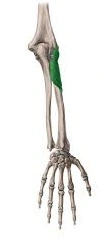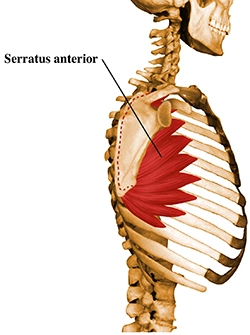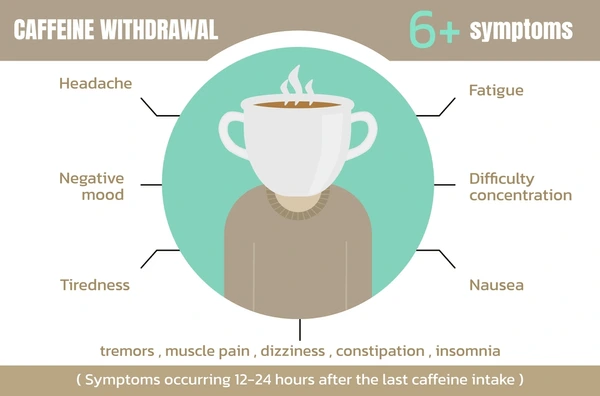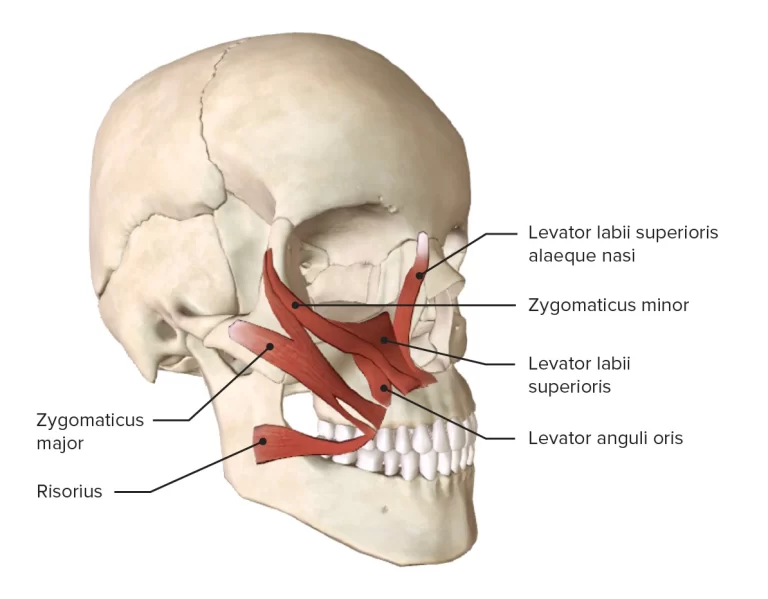Palmar interossei muscles
What are Palmar interossei muscles?
The palmar interossei are the hand’s short, unipennate intrinsic muscles. Together with the dorsal interossei muscles, they occupy the spaces between the metacarpal bones and are located on the palmar surface of the hand.
There are four muscles called palmar interossei that attach to the first, second, fourth, and fifth fingers. The one on the first finger may only be basic at times. There is no palmar interosseous muscle on the third finger.
Strong adductors of the fingers, the palmar interossei also play a significant role in the flexion and extension of the second, fourth, and fifth fingers.
Origin of Palmar interossei muscles
The medial palmar surface of the first metacarpal is where the first palmar interossei, also known as pollical palmar interosseous, begin. It is frequently regarded as basic.
The medial surface of the base of the second metacarpal is where the second palmar interosseous originates.
The lateral aspect of the fourth and fifth metacarpals is where the third and fourth palmar interossei originate.
Insertion
The first interossei insert into the base of the proximal first phalanx. The second one also inserts into the base of the first phalanx and onto the medial portion of the first digit’s extensor hood.
The lateral aspect of each extensor hood is where the third and fourth interossei insert.
Relations
On the palmar surface of the hand, the palmar interossei muscles are smaller than the dorsal interossei muscles and are situated between the metacarpal bones.
The first palmar interosseous runs from the first dorsal interosseous posteriorly to the adductor pollicis’s oblique head anteriorly.
The oblique head of the adductor pollicis also overlaps the 2nd palmar interosseous, and the tendons of the flexor digitorum profundus that are meant for the ring and little fingers overlap the 3rd and 4th palmar interossei.
Innervation
The deep branch of the ulnar nerve, which comes from the roots C8 and T1, innervates both the palmar and dorsal interossei.
Blood supply
The deep palmar arch, the princeps pollicis artery, the radialis indicis artery, the palmar metacarpal arteries, the proximal and distal perforating arteries, and the common and proper palmar arteries supply blood to the palmar interossei muscles.
Function of Palmar interossei muscles
The palmar interossei’s primary function is to adduct the fingers along a longitudinal axis—that is, move the fingers toward the middle finger.
The first palmar interosseous drag the index finger or second finger medially, while the second, third, and fourth drag the ring and little fingers at the lateral side.
In the metacarpophalangeal joint, the palmar interossei oppose the dorsal interossei on a functional level.
Mnemonic
PAD DAB
- Palmar interossei – ADduct
- Dorsal interossei – ABduct
Clinical Relevance
The deep palmar branch of the ulnar nerve supplies innervation to the palmar interossei. As a result, interossei muscle weakness or even atrophy can result from ulnar nerve injury, which is mostly caused by:
nerve root impingement
brachial plexus compression
nerve entrapment at the wrist, elbow, or forearm.
The second most common compression neuropathy that patients present with is ulnar nerve entrapment. Patients may experience weakness in the adduction of their fingers, depending on the affected nerve fibers. The lumbricals play a major role in both the metacarpophalangeal joint flexion and the DIP and PIP joint extension; However, these movements also involve the interossei, but to a lesser extent.
The ulnar claw hand, a late symptom of ulnar nerve damage, is caused by weakness in the third and fourth lumbricals.
Assessment
To rule out other diagnoses and evaluate the ulnar nerve pathology, electromyographic and nerve conduction velocity studies are used.
Patients are instructed to adduct all of their fingers when Wartenberg’s sign is positive. If the test is positive, the fifth finger will be abducted relative to the other digits, indicating weakness in the fourth lumbrical and third palmar interosseous muscles.
Technique: To examine the palmar interossei, a patient can be instructed to hold a piece of paper between any of the second through fifth digits; dropping the paper indicates a palmar interossei deficiency.
Palmar interossei muscle stretching
At the metacarpophalangeal joints, the abduction of the index, ring, and little fingers stretches the palmar interossei (of the central compartment group).
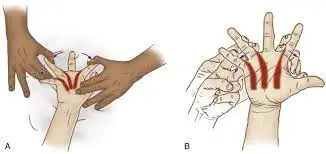
Palmar interossei muscle strengthening exercise
Isometric Finger Adduction Exercise
Sit erect in a seat.
With your fingers level and your palm confronting, put your impacted arm on a table. Place a finger from your unaffected hand on the finger that is nearest to your center finger.
Try to move your affected finger toward your middle finger while resisting the movement with your opposite hand.
Hold your palm and forearm flat on the table throughout the activity. With the other fingers, perform the same action.
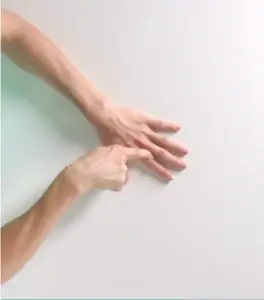
Hand grippers
Pick a hand gripper with a difficult level to begin. Squeeze the gripper together while holding it in your hand, hold it for a few seconds, and then release it. In each hand, perform twelve repetitions for three sets. Squeeze the gripper together and hold it for as long as you can to make the exercise harder.
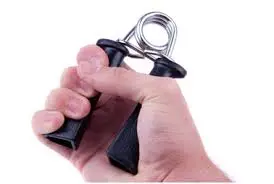
The Hang
Start with broad arms. If at all possible, grab the pull-up bar and hang for one minute at a time. Every day, do this exercise three times. Try hanging with only your fingertips if that isn’t challenging enough.
The fingertip push-up
Take on the push-up position with your hands under your shoulders, lifting your body off the ground and keeping your legs straight and on your toes. If the toes are too hard, sit on your knees and make sure your body is in the right position. Lift the palms off the ground until the body is supported by the fingertips. Bring down the body toward the floor and push up to continue the beginning position. For three sets, perform twelve repetitions. Perform this workout three times per week.
FAQ
The palmar interossei serve what purpose?
Between the metacarpals are a group of doubled intrinsic hand muscles known as the palmar interossei. They are composed of four or sometimes three palmar muscles and adduct the fingers. Additionally, the interphalangeal and metacarpophalangeal joints can be flexed and extended with the assistance of the palmar interossei.
Which finger lacks interossei in the palm?
There are four muscles called palmar interossei that attach to the first, second, fourth, and fifth fingers. The one on the first finger may only be basic at times. There is no palmar interosseous muscle on the third finger.
What is the primary role that the palmar interossei play?
Between the metacarpals are a group of doubled intrinsic hand muscles known as the palmar interossei. They adduct the fingers and are made up of four, or sometimes three, palmar muscles.
Which hand has the most palmar interossei muscles?
The palmar interossei also assist with the flexion of the metacarpophalangeal joints and the extension of the interphalangeal or IP joints. The palmar or volar interossei, also known as the “interossei volar” in older works of anatomy, are three small, unipennate muscles in the hand that are attached to the index, ring, and little fingers. They are located between the metacarpal bones. They are more modest than the dorsal interossei of the hand.
How does palmar interosseous pain manifest?
The skeletal muscles of the hand called the palmar interossei are what move the fingers. The most common cause of injury to the palmar interossei is overuse, like typing for a long time. It becomes difficult or painful to shake hands, type, or wiggle the fingers due to muscle inflammation.

